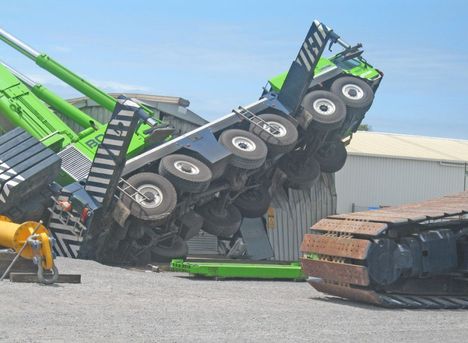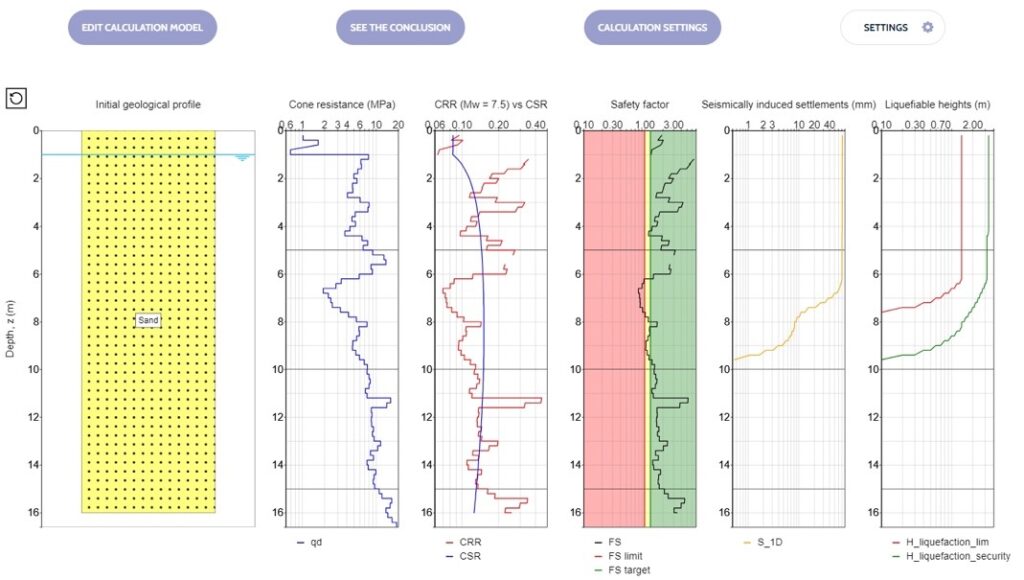Three Ways To Measure Bearing Capacity For Mobile Crane And Piling Rigs Working Platforms
One of the key concerns of project managers is safety, including the risk of people getting injured or killed at site. Hence, for temporary working platforms, the need to measure the in-situ bearing capacity to minimise the risk of a critical failure or incident for mobile crane / temporary cranes applications, piling rig and heavy mining equipment. This can include traversing the site, prior to starting work.
The current method of designing temporary works platforms (e.g for crane pads and piling rigs) identifies that a key problem is “punching failure”, but relies heavily on modelling assumptions and on site investigation data. In order to certify working platforms at present, typically, proof rolling or maybe a plate load test is carried out, and unless there are visible problems, the test results are usually accepted without question. Most significantly, investigations following piling rig and crane toppling incidents have often found that inherent, isolated areas of weakness or ground collapse beneath a working platform have been the actual causes of failure, which were not indicated by plate load testing or proof rolling.
For this reason, it is essential that contractors constructing working platforms inspect and check sub-grades for:
- bearing capacity on the working platform
- any evidence of localised weak areas, such as old pits, trenches
- bearing capacity along the route along which the heavy plant and equipment will traverse the site.
Changes in on-site conditions (e.g. due to heavy rain) since the original testing may need to be assessed and a fast way of doing this is going to be beneficial.
Case Study
Before construction work started on the project, an engineer signed off on the ground condition and the compaction testing results. Maybe they also did a slope stability assessment. Although pre-cast bridge spans had been lifted from the exact same spot 6 times previously during the project, there was heavy rain in the week preceding this incident.
Here are three different devices used to assess bearing capacity for this type of application:
- Plate Load Test (25-30 mins per test including setup)
- Instrumented Dynamic Cone Penetrometer (10 mins per test depending on depth & material)
- Light Weight Deflectometer (3 mins per test)
Plate Load Test (AX01)
The Plate Load Test (or Plate Bearing Test) is an insitu site investigation field test used to determine the ultimate bearing capacity of the ground and the likely settlement under a given load. It is designing for measuring static loads on spread footings (e.g. to determine whether the ground has sufficient bearing capacity to support structures, mobile cranes, piling rigs and heavy mining equipment).

This is coupled with safer operation compared to ‘old style plate load test with dial gauges’ as the operator is not under the counter weight taking readings. Actually, the operator doing the test can be removed from the counterweight jacking point by up to 7m. Plates range from 300mm to 762mm.
Instrumented Dynamic Cone Penetrometer (PANDA® Variable Energy DCP)
This Instrumented DCP is a light weight highly portable method for evaluating soil strength with one person operation. On the hand held terminal, there is an immediate rich graphical representation of the data (penetrogram), plotting depth and cone tip resistance (qd). All the GPS located data is captured automatically (no manual data recording) and transferable to the laptop for further analysis.
The PANDA® is designed to improve the quality of site characterisation and reduce the difficulties involved. The PANDA® DCP provides immediate repeatable results so that on-site decisions can be made straight away.
We describe the PANDA® as a DCP on steroids. It has so much more capability than a standard DCP and overcomes the safety issues. The PANDA® is operated by one person and typically can reach 4-6 metres depth in soils with a cone resistance of 20-30 Mpa. The PANDA® DCP in good in clay or sandy material, for example, but you will run into issues with well compacted gravel or rock fill, due to a physical penetration refusal.
Light Weight Deflectometer (ZFG 3000)

If you have done a Plate Load Test and established your load settlement curve, you can also use the Light Weight Deflectometer and establish a relationship between Evd (from the Light Weight Deflectometer) and Ev2 (from the Plate Load Test) for a particular material.
Remember the zone of influence (depth) is limited by the diameter of the base plate, as is the case with the Plate Load Test.
We’d like to play our part in preventing scenes like this.
We’d really value your thoughts and experiences on assessing the bearing capacity of soil for mobile crane / temporary cranes and piling rig applications, include traversing the equipment across the site and the value these tools would add to the methods currently in use to assess the bearing capacity.
That was really useful and informative yesterday – started a lot of discussion around here.
We find the Insitutek team extremely helpful and their knowledge of the equipment and its capabilities is a great resource for our staff.
We are using the PANDITO DCP for Level 1 site supervision, it’s very portable and we find it handy for flying into sites.
Insitutek Blogs
We find clients are often looking for ways to improve geotechnical testing outcomes and do it more efficiently at the same time. This drives their buying decision making. Australian Soil and Concrete Testing (ASCT) was a case in point when they were searching for Plate Load Test equipment for their upcoming Collector Wind Farm project. Some of the things that motivated them include: […]
We are excited to introduce the addition of a new Liquefaction Risk Estimation module in WebSprint©. Paired with our cutting-edge products, PANDA® and GRIZZLY®, this module enables you to assess the liquefaction risk of soils exposed to seismic stress. PANDA® Instrumented DCP: This cutting-edge tool provides dynamic penetrometer soundings, delivering precise data crucial for seismic risk evaluations. GRIZZLY® […]
The Australian Geomechanics Society is gearing up for a series of geotechnical events across VIC, WA, NSW, and SA-NT. We are thrilled to inform you that we will be sponsoring and attending these exciting geotechnical events, and we would love for you to join us. It’s a fantastic opportunity to catch up, explore our booth (VIC), and stay informed about […]









